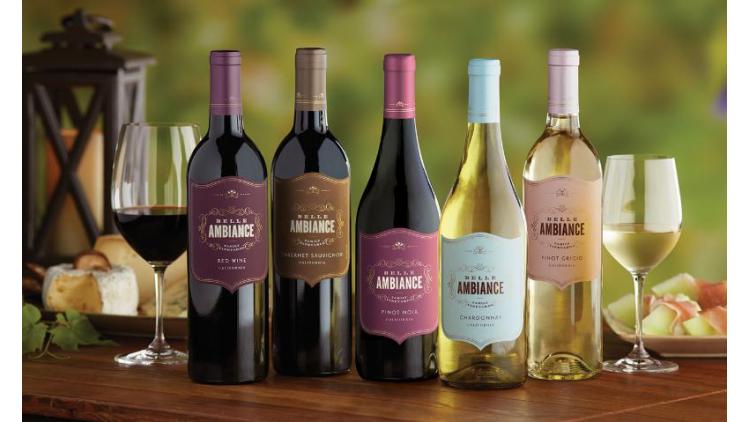4 ways adhesives aid and abet wine packaging
June 26, 2015

The next time you’re enjoying a delicious glass of your favorite Merlot, take a moment to think about all of the adhesives that were involved in the process of getting the wine from the vineyard to your table. From the labels that adorn the front and back of the bottle, to the case the wine was placed in prior to being loaded on a pallet and shipped, adhesives play a bigger role in the wine packaging and labeling process than you may have ever realized.
Let’s take a closer look at some of the many ways that wineries rely on hot melt and other adhesives.
1. Applying Labels
The label on a wine bottle is an extremely important element, as it is a visual representation of the winery’s brand. Ensuring that the wine label sticks to the bottle without slipping or getting dog-eared during the shipping process is imperative to making a good impression at the store, and ultimately to driving consumer interest and sales.
Wine labels are applied to bottles either manually or automatically. In manual application, staffers use a label gluer to apply adhesive to a single label, then affix the label to the bottle. In automatic applications, the wine bottles are sent through high-speed labeling machines that affix the labels to bottles, typically using water-based glue. Many large wineries use premade “peel and stick” type labels on rolls. The adhesive on these pressure-sensitive labels was applied to non-printed paper stock by large converting companies and sent to the label printers.
There’s no right or wrong way to apply wine bottle labels, as long as the labels stick. Ultimately, the volume of wine being produced and the winery’s budget and preferences will determine if manual or automatic label application is used.
2. Building Boxes and Cases
Many of today’s small- and medium-sized wineries opt to handle their own packaging needs, including building and sealing wine cases and boxes. These same wineries have found that the process of building the box—folding the minor flaps inward, applying the adhesive, then folding the major flaps over the minor flaps before applying compression to set the seal—can be an extremely time-intensive, headache-prone process. Wineries using water-based or white glue may find the process especially tedious, due to the much longer compression and drying times required for their chosen adhesive.
Wine manufacturers that want to streamline the boxing process can use a system called a box erector. Consisting of a box mandrel, a high-volume hot melt system and a tool balancer that supports the hot melt handgun, a box erector system can significantly decrease the amount of time necessary to erect high-quality wine cases. Additionally, the hot melt adhesive used in box erector applications is much easier and more economical to apply than water-based or white glue adhesives—in fact, sealing a box bottom with hot melt typically costs a single penny.
For high volume applications, hot melt adhesive is applied to both the bottom of the case in an automatic box erector and to the top of the box in a case sealer. This machine can easily erect and seal hundreds if not thousands of cases of wine per hour.
3. Unitizing Pallets for Shipping and Delivery
Getting the product safely to the stores and to the customer is a priority for all wineries—after all, any bottle that is damaged or destroyed in the shipping and delivery process is a bottle that cannot be sold. Many wineries use adhesive to help secure wine cases to one another on pallets as a way to help minimize the chances of cases sliding during shipping. Wineries may choose to use hot melt or water-based glue in the palletizing process, depending on their preference.
4. Adding Wax Seals
Some wineries seal the tops of the bottles with a colorized wax seal. This material is primarily used to add aesthetic appeal to the bottle of wine. You will be surprised to know that this is actually a custom wax/hot melt adhesive mixture not just wax. This can be applied with hot melt handgun, benchtop hot melt metering system or automatic hot melt machine
Adhesives: The hidden heroes
From the labels that denote which wine you’re buying, to the cases and pallets in which the wine bottles are shipped, adhesives play an important but often overlooked role in the wine labeling and packaging process. The next time you’re uncorking a bottle, why not give a silent salute to the all of the hard-working adhesives that helped make the process possible?
Pierce Covert is the president of Glue Machinery Corp., a company that supplies industrial strength adhesives and machinery for a range of industries.
About the Author(s)
You May Also Like


